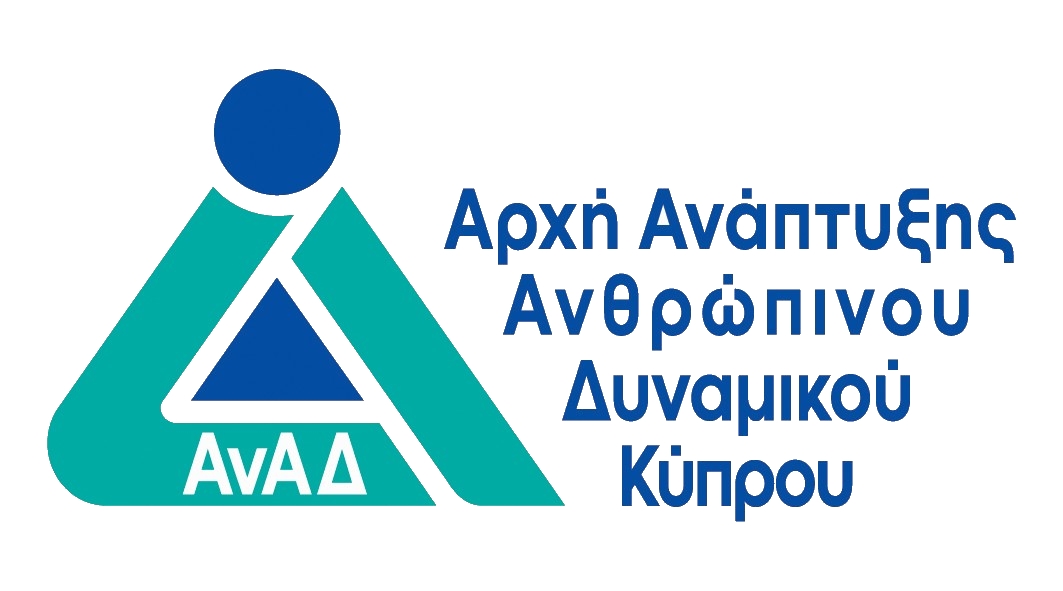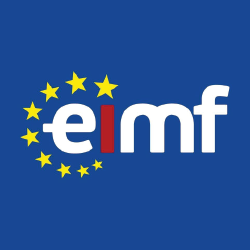
ACAMS Certified Anti-Money Laundering Specialist (CAMS) Exam Preparation course
- Χρηματοοικ. Ασφαλιστικά Τραπεζικά - Πιστοποιήσεις/ Προσόντα/ Άδειες

ΠΕΡΙΓΡΑΦΗ
The Association of Certified Anti-Money Laundering Specialists (ACAMS) is the largest international membership organization dedicated to enhancing the knowledge, skills, and expertise of AML/CTF and financial crime detection and prevention professionals.
While the technologies underpinning cryptoassets and blockchain may differ from those used by traditional financial institutions, the fundamental financial crime risks remain the same.
As such, the course will advance the professional knowledge and skills of those dedicated to the detection and prevention of money laundering around the world, promote the development and implementation of sound anti-money laundering policies and procedures and prepare eligible candidates to sit the ACAMS C-CASS examination.
Why Earn CAMS?
The Certified Cryptoasset AFC Specialist (CCAS) designation demonstrates your skills and knowledge on the evolving topic of cryptoassets necessary to manage the risk of, and comply with regulations related to, financial crime in the context of the crypto sector. ACAMS certifications are internationally renowned and recognized. Those who earn the CCAS designation will be distinguished as authorities on AML/CFT in the crypto space.
The CAMS credential:
- Demonstrates that your institution meet a specialized standard of knowledge relating to managing the risk of, and complying with regulations related to, financial crime.
- Identify and mitigate crystallized and emerging crypto financial crime threats, and apply suitable controls
- Ensure your employees’ skills remain sharp and their knowledge current, through study, exam preparation, and a continuing education requirement
ΣΚΟΠΟΣ ΣΕΜΙΝΑΡΙΟΥ
By the end of the programme, participants will be able to:
- Describe the types, characteristics and purposes of different blockchains
- List the Limitations and advantages of cryptoassets compared to fiat methods of payment
- Name the Virtual Asset service providers (VASP) types and functions
- Rank the categories of risks
- Describe the different blockchain transactions operations
- Identify how different blockchains are used to store cryptoassets
- Understand the responsibilities of compliance roles within an organization
- List the Virtual Asset service providers (VASP) categories
- Express the vulnerabilities and risks associated with different blockchains
- Describe the Decentralized autonomous organizations (DAOs) and decentralized applications (DApps)
- Name the purpose of smart contracts
- Develop consensus methods including proof of work vs. proof of state
- Perform KYC/CDD standards and best practices
- Explain How a user can purchase and acquire crypto assets
- Identify the types of red flags and which red flags apply to different organizations and different products
- Justify the procedures for transaction monitoring
- Organize Internal procedures for escalation and investigations
ΣΕ ΠΟΙΟΥΣ ΑΠΕΥΘΥΝΕΤΑΙ
The programme is addressed to professionals from Banks, Non-Bank Financial Institutions, Investment firms, Fintech companies, DNFPBs with financial crime compliance programmes, Consulting firms and Regulators. Specifically, it is addressed to
- Transaction monitoring analyst
- Fraud investigator
- All AML professionals
- Chief compliance professionals
- Audit, special investigations
- SAR/STR reporting professionals
- Regulatory examiner
- Law enforcement
- Blockchain technologist
- Systems designer
- Legal counsel
- Intelligence analyst
- Cyber security professionals
ΠΕΡΙΣΣΟΤΕΡΕΣ ΠΛΗΡΟΦΟΡΙΕΣ
Training Outline
Cryptoasset Infrastructure
Overview of what Blockchain and Cryptoasset is. Specifically
- Blockchain Introduction
- Blockchain
- Blockchain types (Public, private, consortium, hybrid)
- Blockchain common features
- Blockchain transparency
- Blockchain models for consensus: Proof of work
- Blockchain models for consensus: Proof of stake
- Blockchain transaction security
- Blockchain infrastructure
- Cryptoasset
- Cryptoasset mining
- Mining pools and hash rate
- Cryptoasset mining geopolitical issues
Cryptoasset Types and Business Models
- Virtual asset
- Virtual asset service providers (VASPs)
- Crypto ATMs
- Centralized compared to decentralized exchange
- Virtual asset service provider lending services
- Mixers and tumblers
- Virtual asset service provider compared to decentralized finance
- Decentralized applications and decentralized autonomous organizations
- Knowledge check
Cryptoasset Wallets and Transactions
- Blockchain transactions
- Blockchain transactions
- How to buy a cryptoasset
- Unspent transaction output based blockchain transactions
- Peer-to-peer blockchain transactions
- Cryptoasset trading
- Blockchain applications other than cryptocurrency
- Wallets
- The value of cryptoasset
- How an owner controls a cryptoasset
- Wallets
- Wallet types and attribution
- Unhosted compared to hosted wallets
- Cloud wallets
- Hardware wallets
Cryptoasset Analytics
- Blockchain events and risks
- 51% attacks
- Hard and soft forks
- Smart contracts
- Block halving
- Cryptoasset tracing
- Cryptoasset anonymity versus pseudonymity
- Cryptoasset tracing
- Blockchain monitoring and analytics tools
- Coin tracing across exchanges
- Attribution
- Wallet research and attribution
- Attributes of a block and sources of data
- Clustering
- Benefits of UTXO tracing
- Knowledge check
Video on how Cryptoassets work – Discussion
Regulations and Guidance for Cryptoasset
- International regulations and guidance
- United Nations
- Wolfsberg, Basel, and Egmont guidance
- World Bank and International Monetary Fund guidance
- Financial Action Task Force
- FATF 40
- FATF cryptoasset guidance
- FATF mutual evaluation report
- Jurisdictions-specific regulations
- AML regulations of 10 large jurisdictions
- Extraterritoriality and blocking
- EU money laundering directive
- EU regulations related to cryptoasset
- UK AML regulations
- Bank Secrecy Act
- USA PATRIOT Act
- The Anti-Money Laundering Act 2020
Video on Cryptoasset regulations – Discussion
KYC – Identification and Verification Processes
- KYC and Transaction Monitoring for Cryptoassets
- KYC
- Risk-based approach to KYC (initial and ongoing)
- Customer identification process for a natural person and a legal person
- EDD for a natural person and a legal person
- Artificial intelligence and machine learning
- Transaction monitoring:
- Risk-based approach to transaction monitoring
- Transaction monitoring process and system tuning for cryptoasset
- Transaction monitoring controls
- Typical scenarios that would generate an alert
- Technology solutions to transaction monitoring
- KYC and transaction monitoring unique to your business:
- Know your VASP
- Information available on the blockchain
- Source of wealth and source of funds in cryptoasset
- Coin tracking and tracing – privacy coins and mixers
Case study on KYC for Cryptoassets – Discussion
What is Financial Crime?
- Types of financial crime
- What is financial crime?
- Money laundering
- Terrorist financing
- Sanctions evasion
- Fraud
- Anti-bribery and corruption
- Tax avoidance versus tax evasion
- Cybercrime
Financial Crime Risk from Cryptoasset
- What is risk?
- Types of risk: Regulatory, legal, financial, reputational
- International regulations and guidance
- Categories of risk: Customer, jurisdiction, product, channel
- Customer risk
- Customer risk and red flags
- Beneficial ownership
- Ultimate beneficial ownership
- Politically exposed person risk and red flags
- Shell company risk and red flags
- Cash-intensive business risk and red flags
- Jurisdictions risk
- Jurisdiction risk and red flags
- Product risk
- Product risk and red flags
- Charity and NGO risk and red flags
- Trade finance risk and red flags
- Cryptoasset risk and red flags
- Channel risk
- Channel risk and red flags
- Electronic transfer of funds risk and red flags
- Remote deposit capture risk and red flags
- Risks specific to your business
- Dark markets risk and red flags
- Mixers and tumblers risk and red flags
- Cryptoasset and gaming risk and red flags
- Cryptoasset sanctions indirect risk and red flags
- Q&A highlights
Overview of Risk Management for Cryptoasset
- Risk assessment
- Risk appetite
- Determine inherent risk
- Risk-rating by applying your institution’s policies and tools
- Risk-rating by applying third-party tools
- Residual risk action plan
- Sanctions risk assessment
- Reporting results of risk assessment
- Risks specific to your business
- Risk assessment for cryptoasset
- Inherent risk of cryptoasset
- High-risk customers in cryptoasset
- Privacy-centered cryptoasset risk and red flags
- VASP risk and red flags
- Risk management programme
- Pillars of an AML compliance program
- Compliance policies and procedures
- Ongoing compliance training
- Independent audit
- Establishing a culture of compliance
- Dual controls
- Know your employee and vendor
- Maintaining AML policies and procedures
- Knowledge check
Video on Financial Crime Risk & Risk Management from Cryptoasset – Discussion
Controlling Risk from Cryptoassets
- Risk-based approach
- Risk-based approach to business
- Controlling risk
- Residual risk equation
- Know your role in compliance
- Three lines of defence
- Risk-based escalation
- Independence of the second line
- Role of the money laundering reporting officer
- Audit as the third line of defence
- The phases of customer research
- Know your customer
- KYC is intended to manage risk
- Transaction monitoring
- Transaction monitoring is intended to manage risk
- Transaction monitoring process
- Sanctions compliance
- Who imposes sanctions?
- Internet search: Sanctions screening
- Transaction monitoring versus name screening
A report on Cryptoassets & Sanctions Compliance – Discussion
Investigations for Cryptoasset
- Starting an investigation
- Sources of investigations
- Protecting the organisation during an investigation
- Researching
- Four research steps applied to an investigation
- Research methods for different blockchains
- Sources especially useful for enhanced customer research
- Internet search: Protecting the privacy of the organization
- Interviewing a customer
- Investigating someone inside your organization
- Working with external partners
- Communicating with law enforcement and regulators for an investigation
- Responding to law enforcement requests
- Public versus private financial intelligence units
- Suspicious activity report structure
- How law enforcement case investigators read a SAR
Crypto investigations tool for combating cryptocurrency crime – practical exercise
Research and Reporting from Cryptoasset
- Research process
- Investigative mindset
- Four research steps
- Levels of due diligence
- CDD for a natural person
- CDD for a legal person
- Information sources
- Criteria for selecting standard customer research sources for cryptoasset
- If you need more information
- Tipping off
- Organising what you learn
- How much research is reasonably enough?
- Following organization-specific policies and procedures
- Filter what customer information is relevant and important for cryptoasset
- Data security and privacy
- Documenting your research
- Customer profile structure and format
- Your obligation
- Duty to report
- Suspicious activity escalation process
- How your organisation might act
- What is a suspicious activity report?
- Who writes a SAR in your organization?
- Transaction monitoring and ongoing reviews
- Maintaining an account after unusual activity
- Refusing or terminating a customer
- Knowledge check
CAMS Certification
The Certified Cryptoasset AFC Specialist (CCAS) credential distinguishes you as an AML/CFT authority.
Those who earn ACAMS CCAS position themselves as industry leaders and:
- Earn more than non-certified colleagues
- Increase their professional value through better understanding of financial crime detection and prevention techniques
- Protect their institution from money laundering threats and minimize financial crime risks
Meet mandated AML training requirements through preparation and study
The EIMF CAMS Examination Preparation Package:
The EIMF is offering the sector’s most competitive prices through a substantial discount to the Cyprus Market and a package that includes all that an AML/CTF professional requires for career advancement.
- Exam costs are included in the fee
- 2-day Course in preparation for the exam
- Electronic and audio study materials
- Study tips, flashcards and practice questions
- ACAMS CCAS Official Study Guide
- Non-ACAMS members will attain 1-year membership
The ACAMSCCAS study guide is your main resource for preparing for the examination. The study guide walks you through:
- Money laundering risks and methods, such as Black-Market Peso Exchange and import and export price manipulation
- The Financial Action Task Force (FATF) Recommendations, the Basel Committee’s Report on Customer Due Diligence and the Wolfsberg Group Principles
- Important elements of an Anti-Money Laundering (AML) program
- How to conduct and support a money laundering investigation
Visit the ACAMS eligibility calculator to determine if you have the requisite background to qualify for the CCAS exam.
CPD Recognition
This programme may be approved for up to 14 CPD units in AML and Financial Regulation. Eligibility criteria and CPD Units are verified directly by your association, regulator or other bodies which you hold membership.
ACAMS and EIMF
The ACAMS and EIMF have a long-lasting collaboration in organising training and development events and promoting opportunities that are of value to the ACAMS members as well as to compliance professionals. The ACAMS has awarded the EIMF the “Authorised Training Provider” status, which allows
EIMF to offer quality preparation courses for participants pursuing the ACAMS certificates, such as the CAMS (Certified Anti-Money Laundering Specialist) and CCASS (Certified Cryptoasset AFC Specialist).
Training Style
The programme is designed to deliver a dynamic blend of theoretical knowledge, practical applications, and interactive sessions to ensure a comprehensive understanding of cryptoassets and Anti-Financial Crime (AFC) measures.
Πληροφορίες Εκπαιδευτή
Αναλυτικό Κόστος Σεμιναρίου
Για Δικαιούχους ΑνΑΔ
- € 2425.00
- € 280.00
- € 0.00
- € 2145.00
- € 2,145.00
Για μη-Δικαιούχους ΑνΑΔ
- € 2425.00
- € 0.00
- € 460.75
- € 2425.00
- € 2,885.75
Κοστολογικές Πληροφορίες
HRDA-approved seminars are exempted from VAT for eligible organisations applying for the HRDA subsidy. A 19% VAT will apply to seminars and participants who do not qualify for the HRDA subsidy ACAMS Members enjoy a further discount of €345 (upon verification)
ΠΡΟΓΡΑΜΜΑ ΣΕΜΙΝΑΡΙΟΥ
Σάββατο - 08 Ιουν 2024
Ώρα
09:00 - 17:15
ΕΚΠΑΙΔΕΥΤΗΣ:
Grecory DellasΤοποθεσία:
OnLine Virtual Classroom
Σάββατο - 15 Ιουν 2024
Ώρα
09:00 - 17:15
ΕΚΠΑΙΔΕΥΤΗΣ:
Grecory DellasΤοποθεσία:
OnLine Virtual Classroom
 Ελληνικά
Ελληνικά  English
English



 Αγγλικά
Αγγλικά
 14 ώρες
(
2 μέρες
)
14 ώρες
(
2 μέρες
)
































